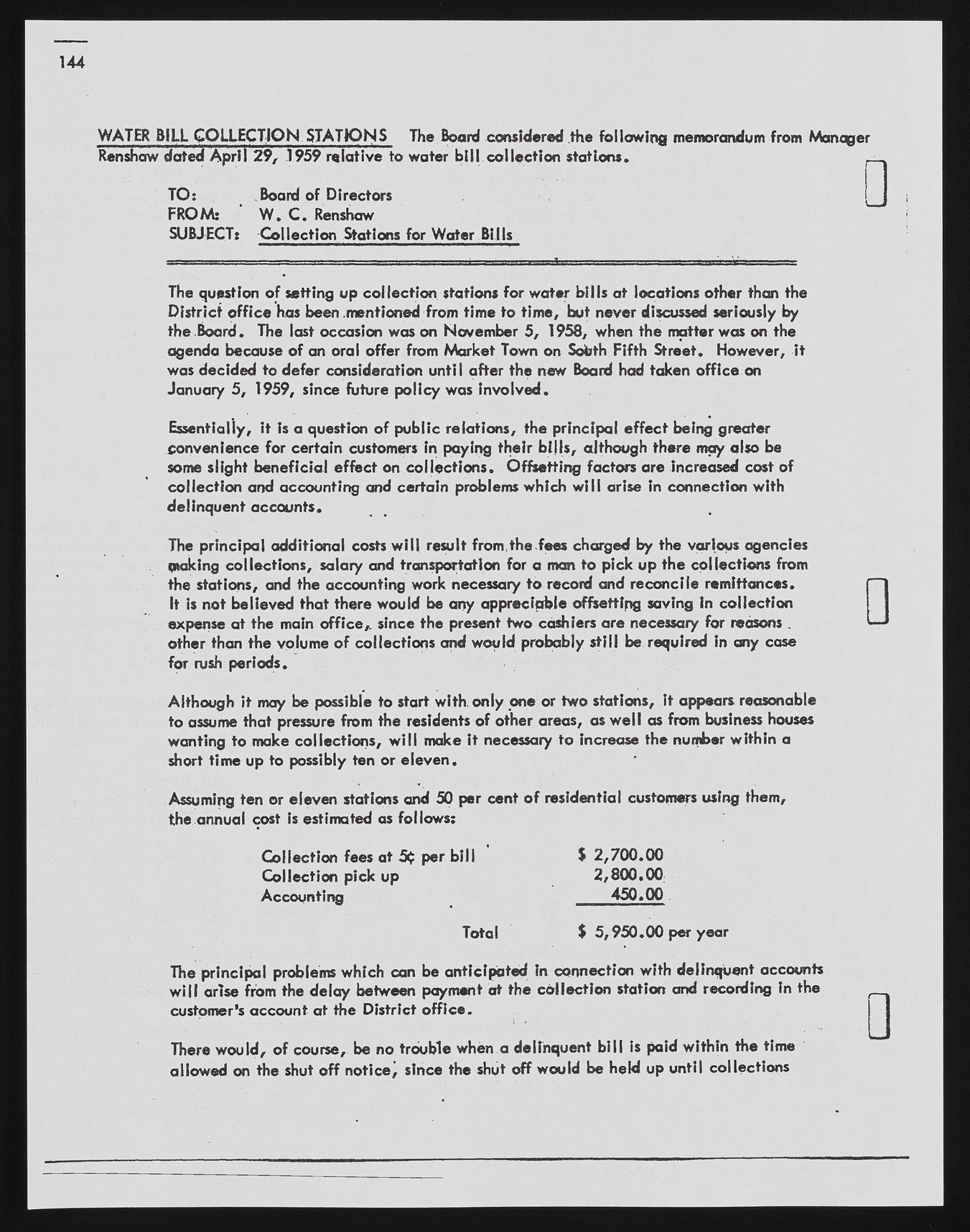Copyright & Fair-use Agreement
UNLV Special Collections provides copies of materials to facilitate private study, scholarship, or research. Material not in the public domain may be used according to fair use of copyrighted materials as defined by copyright law. Please cite us.
Please note that UNLV may not own the copyright to these materials and cannot provide permission to publish or distribute materials when UNLV is not the copyright holder. The user is solely responsible for determining the copyright status of materials and obtaining permission to use material from the copyright holder and for determining whether any permissions relating to any other rights are necessary for the intended use, and for obtaining all required permissions beyond that allowed by fair use.
Read more about our reproduction and use policy.
I agree.Information
Digital ID
Permalink
Details
More Info
Rights
Digital Provenance
Publisher
Transcription
144 WATER BILL C O L L E C T IO N S T A T IO N S The Board considered the following memorandum from Renshaw dated A p ril 2 9 , 1959 relative to water bill collection stations. T O : Board of Directors FR O M : W . C . Renshaw SU BJECT: Collection Stations for Water Bills The question of setting up collection stations for water bills at locations other them the District office has been .mentioned from time to time, but never discussed seriously by the Board. The last occasion was on November 5, 1958, when the matter was on the agenda because of an oral offer from Market Town on Sobth Fifth Street. However, it was decided to defer consideration until after the new Board had taken office on January 5, 1959, since future policy was involved. Essentially, it is a question of public relations, the principal effect being greater convenience for certain customers in paying their bills, although there may also be some slight beneficial effect on collections. Offsetting factors are increased cost of collection and accounting and certain problems which w ill arise in connection with delinquent accounts. The principal additional costs will, result from,the.fees charged by the various agencies making collections, salary and transportation for a man to pick up the collections from the stations, and the accounting work necessary to record and reconcile remittances. It is not believed that there would be any appreciable offsetting saving in collection expense at the main office,, since the present two cashiers are necessary for reasons . other than the volume of collections and would probably still be required In any case for rush periods. Although it may be possible to start with, only one or two stations, it appears reasonable to assume that pressure from the residents of other areas, as w ell as from business houses wanting to make collections, w ill make it necessary to increase the number within a short time up to possibly ten or eleven. Assuming ten or eleven stations and 50 per cent of residential customers using them, the annual cost is estimated as follows: Collection fees at 5$ per bill $ 2 ,7 0 0 .0 0 Collection pick up 2 ,8 0 0 .0 0 ; Accounting 450.00 Total $ 5,95 0 .0 0 per year The principal problems which can be anticipated in connection with delinquent accounts w ill arise from the delay between payment at the collection station and recording in the customer's account at the District office. There w ould, of course, be no trouble when.a delinquent b ill is paid within the time allowed on the shut off noticel since the shut off would be held up until collections

